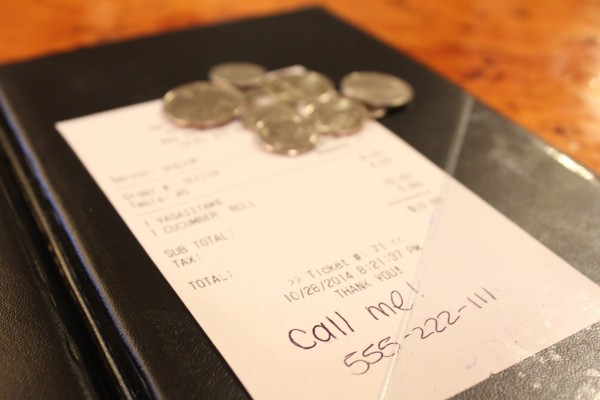Students Harassed in Restaurant Industry
November 6, 2014

A new report, “The Glass Floor: Sexual Harassment in the Restaurant Industry,” by the Restaurant Opportunities Center United finds that nearly two-thirds of women working restaurants experienced sexual harassment in the workplace. Several Fordham students, including Shery Arce and Laura Hetherington, Fordham College at Lincoln Center (FCLC) ’17, work in the industry to pay for school and other life expenses.
“This one guy said I had really nice eyes, and just kept commenting on my face and saying how ‘exotic’ I looked. And when he left, he left a hotel card for a hotel door,” Shery Arce, FCLC ’16, a server in Manhattan, remembered. This is not uncommon for women who work tip-dependent jobs.
“It happens everywhere,” Hetherington, a former hostess, said. “It doesn’t seem like that big of a deal to you when it’s happening to you unfortunately, because it’s just so common which is really messed up.”
Heatherington rarely ever reported sexual harassment to her boss. “I think it’s really sad that we never told anyone about it every night because it would happen every single night,” she said.
She continued to explain some the reasons she was reluctant to speak up: “You’re going to get a bad rap. Your table’s going to be upset with you … I was a hostess, and I didn’t want my waitress to get tipped low because I flipped out on some guy.”
The minimum wage for tipped restaurant workers in New York is $5 per hour. Therefore, the majority of a server’s income comes from her tips. Servers face a challenge about how to respond to sexual harassment since they rely on their customers for their income.
Arce makes $5.50 per hour, but including tips she earns between $25 and $35 per hour. “You’re put in this position where you can play along with it and get a really great tip, but then also lose some dignity there, or you can just report it to your boss,” she said.
Arce has experienced not only sexually inappropriate comments, but also racially-charged language. “I’m Latina so people always ask me where I’m from, and I say that my family is from Colombia, and so they’re like ‘Oh, Sofia Vergara!’ and they’ll make sexual jokes.”
Another example of harassment that Hetherington experienced is when a customer said to her, “Oh, you look so sad. Smile more.” She said, “Even that is so irritating to hear because it’s so annoying. Why are you telling me how I should be looking at you?”
According to the National Institute of Alcohol and Alcohol Abuse, one-half of sexual assault cases by male perpetrators are prefaced with their alcohol consumption. “When patrons would get a little intoxicated towards the end of the night, it would definitely happen,” Hetherington said.
“You’ll see customers play around, especially after consuming alcohol when they feel more relaxed and will take the extra step and flirting or even touching you,” Arce said.
Hetherington and Arce partly attribute the culture of the restaurant industry to the prevalence of sexual harassment in their workplace. “The thing when you’re working in a restaurant is it’s about service and about presenting yourself and being friendly, but people misconstrue that with your appearance. They take ownership of the way you look and everything while you’re serving them,” Hetherington said.
“It’s sort of an unspoken thing in every restaurant that you work in … that you should just deal with it,” she said.
Arce agreed: “People think it’s okay because part of our job is to make people comfortable. It’s like a king-server dynamic where you’re constantly serving these customers … It’s that power dynamic which makes things okay, even though they’re not okay.”








